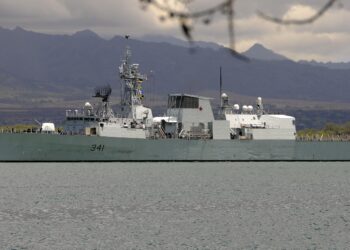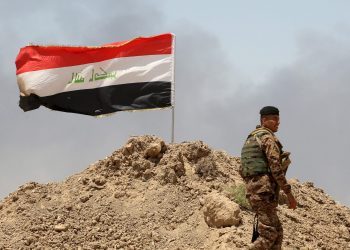Center for Defense Information (CDI),
Six years after the Sept. 11 attacks, little has changed in the Bush administration’s strategy with regard to U.S. arms exports. The Bush administration is still supplying high technology weapons and millions of dollars in military assistance to allies in the “war on terror.” Support for the United States – either in its quest to stamp out international terrorist networks, or for its operations in Iraq and Afghanistan – seemingly takes precedence over other criteria usually taken into account when the United States considers an arms transfer.
According to long-standing tenets of U.S. arms export policy, arms transfers should not undermine long-term security and stability, weaken democratic movements, support military coups, escalate arms races, exacerbate ongoing conflicts, cause arms build-ups in unstable regions, or be used to commit human rights abuses. However, in the last six years, the Bush administration has demonstrated a willingness to provide weapons and military training to weak and failing states and countries that have been repeatedly criticized by the U.S. State Department for human rights violations, lack of democracy, and even support of terrorism.
Since 2001, CDI has sought to thoroughly evaluate and analyze this trend of increased military assistance. Over the last six years, CDI has profiled 25 countries that have a unique role in the “war on terror” through the strategic services they have provided to the United States as it conducts anti-terror operations across the globe. The series features analysis of the current political situations in the profiled countries, taking into account other indicators of the relative stability and openness of the country, such as military expenditures, total number of armed forces, and the human rights situation as assessed by the U.S. State Department, alongside an evaluation of U.S. military assistance to these countries over the past 17 years – the post-Cold War years.
CDI’s ongoing research continues to document some troubling trends. Using U.S. government data, CDI has documented that, in the five years after Sept. 11, total U.S. arms sales (Foreign Military Sales and Direct Commercial Sales ) to these 25 countries were worth four times more than those concluded in the five years prior to Sept. 11, and these countries received 18 times more total U.S. military assistance (Foreign Military Financing and International Military Education and Training) after Sept. 11 than before. Furthermore, 72 percent of the countries in this series received more military assistance and 64 percent conducted more arms sales with the United States during the five years after Sept. 11 than during the entire period between the end of the Cold War and Sept. 11 (FY 90-01).
While total U.S. Foreign Military Sales (FMS) between FY 02 and FY 06 totaled approximately $9 billion less than between FY 97 and FY 01, the United States has increased sales to new post Sept. 11 allies and has made several large and potentially troublesome arms deals, including a multi-billion dollar sale of F-16 fighter jets to Pakistan. Further, total FMS projections for FY 06 through FY 08 are higher than any other year since the end of the Cold War. And, FMS provided to the 25 countries in this series during the five years after Sept. 11 is twice the amount sold in the five years prior.
Total Direct Commercial Sales in the five years after Sept. 11 totaled roughly $66 billion more than in the five years prior, an 11-fold increase. Furthermore, the increase in DCS to the 25 countries examined in this series was even more dramatic, with DCS between FY 97 and FY 01 totaling only $72 million, as compared with more than $3 billion in DCS between FY 02 and FY 06. Increases in arms sales are in part due to the lifting of sanctions and restrictions to certain countries immediately after Sept. 11, including India, Pakistan, Armenia, Azerbaijan, Tajikistan.
Just as the United States is using arms sales as a reward to its allies in the “war on terror,” military assistance programs have also increased since Sept. 11. Between FY 97 and FY 01, the IMET account averaged $49.3 million but in the five years after Sept. 11 (FY 02 through FY 06) the IMET account averaged $81.9 million – an increase of 66 percent. Likewise, the FMF budget* averaged $287 million between FY 97 and FY 01 but then tripled – to an average of $1.2 billion – between FY 02 and FY 06. Military assistance to the countries examined in this series increased at an even steeper rate, receiving an increasing percentage of the total IMET and FMF budgets. Between FY 97 and FY 01, the 25 countries examined in this series received, on average, 16 percent of the IMET budget and 4 percent of the FMF budget, whereas between FY 02 and FY 06, this percentage rose to 23 percent of the IMET budget and 33 percent of the FMF budget.
In 2006, the U.S. State Department reported that “serious,” “grave,” or “significant” abuses were committed by the government or state security forces in more than half of these 25 countries. However, U.S. military assistance to these countries is on the rise, even as their human rights situations remain poor and, in some cases, have become worse. For example, after barring Azerbaijan from receiving U.S. military assistance and defense equipment* for more than 15 years, the United States lifted the sanctions it imposed immediately following Sept. 11 and, in the five years following Sept. 11, Azerbaijan received over $27 million in military assistance and purchased more than $14 million in U.S. weapons. At the same time, the U.S. State Department human rights reports have detailed the deterioration in the human rights situation in Azerbaijan since Sept. 11. In 2001, the situation in Azerbaijan was reported as “poor.” This assessment changed to “very poor” from 2003 to 2005. In 2006, the State Department reported that the government “continued to commit numerous abuses.” Yet, military assistance continues to flow to Azerbaijan and FY 07 and 08 budget requests for military assistance and arms sales projections reflect similar levels as in previous years.
Several countries now receiving increased quantities in U.S. military assistance have also undergone serious political changes since 2001 and, in some cases, are quite unstable. In 2006, for example, Nepal experienced a general strike and nationwide political demonstrations during which police and soldiers fired on civilian protestors; Thailand’s government was overthrown by a military coup; and an attempted coup was carried out against the Chadian government, which has also been involved in armed border skirmishes with Sudanese soldiers, militia groups, and rebels. And in late 2006 and early 2007, Ethiopia carried out a full-scale ground invasion of Somalia in order to drive out the Union of Islamic Courts, a military operation which resulted in the death of numerous Somali civilians.
As Congress, the public, and the media begin to question some of these transfers, the Bush administration is increasingly supplementing traditional military assistance with new accounts developed after Sept. 11 that fall under the authority of the Defense Department. Funding appropriated under these accounts is subject to fewer restrictions than traditional military assistance programs, which are governed by the State Department. In FY 02, the Regional Defense Counterterrorism Fellowship Program (CTFP) was originally created with a mandate to provide non-lethal anti-terrorism training but began offering lethal training in FY 04. Critics claim that the CTFP essentially serves the same purpose as the State Department’s International Military Education and Training (IMET) program but without any of the oversight and conditions of the State Department-run programs. In FY 06, Congress authorized the Defense Department (DOD) to use $200 million of its Operation and Maintenance funds to equip and train foreign militaries for counterterrorism operations. Creating these parallel training authorities and funding them through the defense budget allows DOD to bypass Foreign Assistance Act restrictions on training or arming human rights abusers that apply to all State Department funding. Twenty-one of the countries profiled in CDI’s series have received either or both CTFP and Section 1206 funding (which allows the secretary of defense to bypass the restrictions of the Foreign Assistance Act and provide equipment, training, and supplies directly to foreign militaries) in addition to the thousands or millions of dollars already provided through the five major military assistance programs.
The implications of increased military assistance to all countries profiled in this series are significant. Even when the increase in military assistance provided by the United States appears small, especially when compared to major U.S. trading partners such as the United Kingdom or other NATO allies, for many countries, any increase in military assistance is noteworthy, regardless of the actual dollar amount provided. Many of the countries in this series had received little if any funding prior to Sept. 11 due to human rights concerns and lack of economic openness and democratic reform. For instance, since Sept. 11, Armenia, Azerbaijan, India, Indonesia, Pakistan, Tajikistan, and the Federal Republic of Yugoslavia (now Serbia and Montenegro) have all been removed from U.S. sanctions lists and are eligible for U.S. military assistance despite reports by the State Department that security forces in nearly all of these countries have committed human rights abuses, despite India’s and Pakistan’s ongoing nuclear programs and continued tension, despite Indonesia’s lack of political and democratic reform and continued human rights concerns, and despite these countries’ involvement in a variety of current inter- and intra-state conflicts.
The data clearly shows that the United States is sending unprecedented levels of military assistance to countries that it simultaneously criticizes for lack of respect for human rights and, in some cases, for questionable democratic processes. As a foreign policy, this is confusing, short-sighted and potentially very dangerous. Once weapons are delivered to a country, it becomes increasingly difficult to control how they are used and difficult to prevent them from being illicitly diverted anywhere in the world. While these countries are currently considered important to U.S. efforts in the “war on terror” now, political and military instability makes their continued allegiance to the United States questionable. Arming such countries with U.S. weaponry has troubling pitfalls: U.S. origin weapons could be used against the United States, its allies, or its interests. Selling arms for short-term political gains undermines long-term U.S national security and strategic interests.
Read all case studies in PDF format









